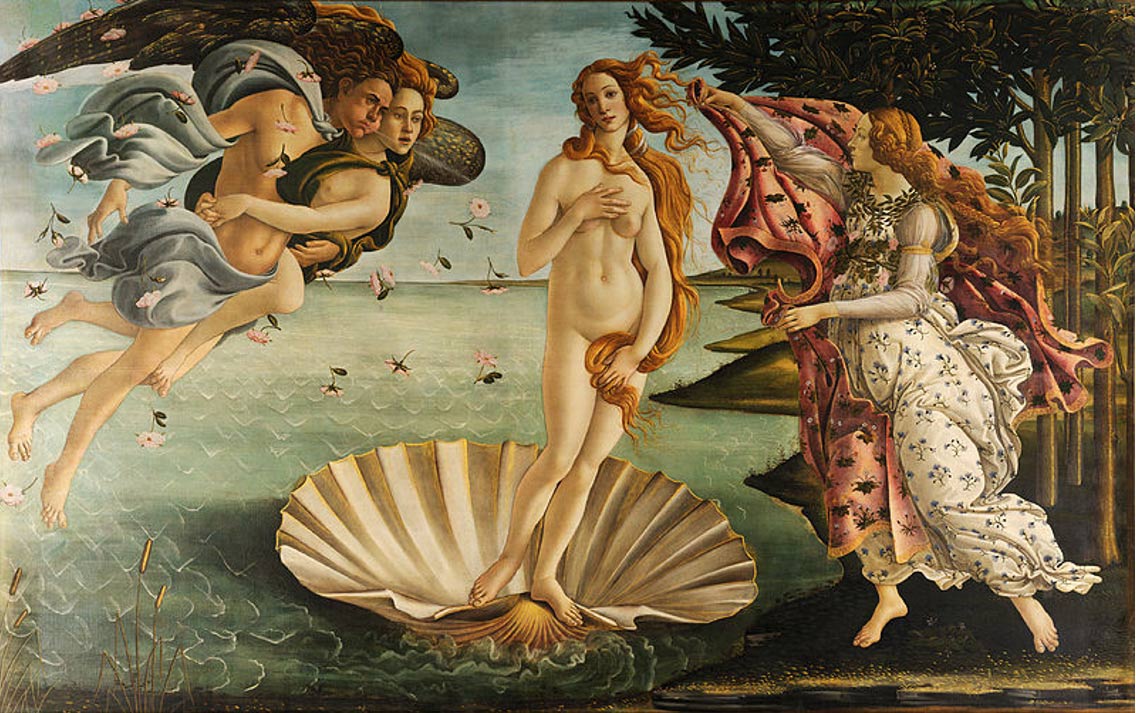Temple in ancient city of Odessus reveals Greek Goddess Aphrodite was worshipped by Thracians
A new look into a Thracian temple buried beneath Roman baths is challenging what researchers once thought about the worship of deities in the ancient city of Odessus, now the Bulgarian Black Sea city of Varna. The Thracians, neighbors to ancient Greece, are likely to have worshipped goddess Aphrodite rather than the Thracian goddess Bendis, as previously thought.
According to Archaeology in Bulgaria, new evidence to support this announcement comes from an underground Thracian temple which was buried beneath Roman baths (thermae) between fifth and sixth century A.D. and has since been excavated.
“The Small Roman Thermae were erected on top of an Ancient Thracian temple or sanctuary that honored Ancient Greek god Apollo as well as a female deity that the Varna archaeologists at first believed was Ancient Thracian goddess Bendis but have recently changed their interpretation to believe that it was in fact Ancient Greek goddess Aphrodite that the Thracian had worshipped,” reports Archaeology in Bulgaria.

The end arches survive in this part of the ancient Roman bathing complex (thermae) with the roof mostly gone. Representational image. Gordontour/Flickr
Dr. Alexander Minchev of the Varna Museum of Archaeology believes there to be indisputable evidence to demonstrate this within the temple beneath the ruins of Varna’s Small (South) Roman Thermae.
MORE
- The Enigma of the Thracians and the Orpheus Myth
- 4,000-year-old Thracian chariot unearthed in Serbia
Bendis was the Thracian hunter goddess. She was known as Artemis to the Greeks, and archaeologists believed that Bendis was the patron of the city of Odessus (which eventually became Varna). However, Aphrodite, the Greek goddess of love, beauty and pleasure may have instead been the patron deity of the city.
It is not clear what the evidence might be, however a report cited by Archaeology in Bulgaria says that the space behind an arch in the northern corner of the Small Roman Thermae may provide further information in the ancient Thracian worship of Aphrodite.

Roman thermae ruins in Varna, Bulgaria. Representational image. Magalle L’Abbe/Flickr
With this new interpretation, it is not surprising perhaps that in the 1960’s, excavations by local archaeologists found that part of a sanctuary under the Roman baths was dedicated to Greek god Apollo, according to Professor Valentin Pletnyov, Director of the Varna Museum of Archaeology.

Bnedis/Artemis (on the right, wearing a Phrygian cap, a short tunic, high boots and an animal skin) and her followers, maybe athletes taking part in the torch relay race in honor of the goddess. Marble votive relief, made in Athens, ca. 400-375 BC. © Marie-Lan Nguyen / Wikimedia Commons

Statue of goddess Aphrodite: The Venus de' Medici. Wikimedia Commons
The Varna culture was not a small and inconsequential society that emerged in a little corner of Bulgaria and disappeared quickly into the pages of history. Rather, it was an amazingly advanced civilization, more ancient than the empires of Mesopotamia and Egypt, and the first known culture to craft golden artifacts.
The society eventually disintegrated in the fifth millennium B.C. However, the Varna culture remains renowned for its rich heritage. Their skills in metallurgy were unprecedented in Europe and indeed throughout the world, and their society demonstrated many features of a highly advanced and developed civilization, as revealed by the Copper Age necropolis discovered at Varna containing the oldest golden artifacts ever discovered. One grave of 43 was found containing the remains of a high status male and unfathomable riches – more gold was found within this burial than in the entire rest of the world in that period.
MORE
- Varna Man and the Wealthiest Grave of the 5th Millennium BC
- Giant Human Skeleton unearthed in Varna, Bulgaria
- The Intriguing Origins of Aphrodite
More excavation has yet to be done. Stage one of the site project as run by Varna Regional Museum of History, and the Varna Chamber of Commerce and Industry is expected to be completed by the end of March 2015.
Perhaps with these continued investigations more information will come to light changing what we thought we knew about ancient Odessus and the Thracian people.
Featured Image: Famous painting depicts the goddess Aphrodite/Venus, having emerged from the sea as a fully grown woman, arriving at the sea-shore. Thought to be based in part on the Venus de' Medici, ancient Greek marble sculpture. Public Domain
By Liz Leafloor
















